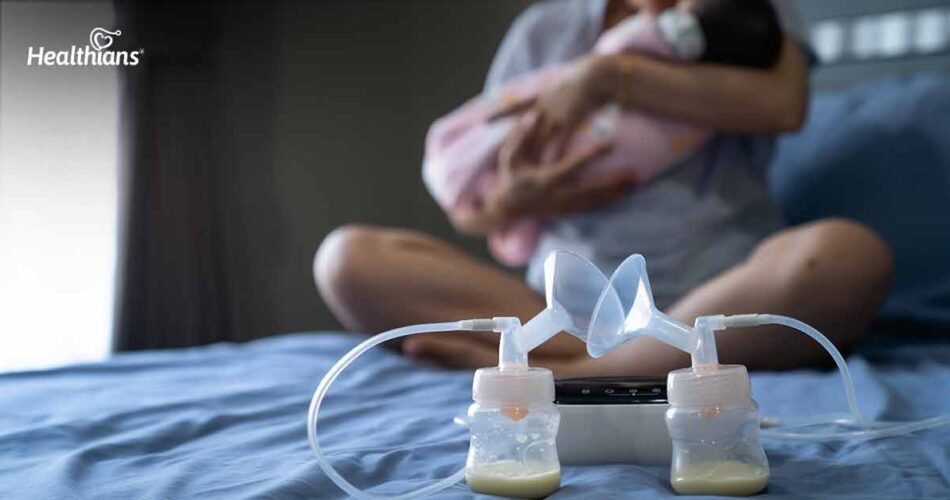Contributed by: Healthians Team
Introduction
Breast pumps have made life simpler, particularly for those mothers who work full- or part-time or enjoy travelling.
New mothers can resume their jobs and provide their newborns with the proper nutrition with the ease of expressing breast milk and storing it for two to three days.
However, not many mothers are aware of the health risks associated with using breast pumps.
In this blog, we will throw light on the negative effects of using breast pumps.
Side effects for mothers
Reduced milk supply
The decreased milk supply is the breast pump’s biggest drawback. The way a baby suckles is very different from the way an adult breast pumps.
Compared to pumping methods, newborns who latch on to their moms and take breast milk suckings produce more milk.
Damaged breast and nipple tissues
Breast milk pumps can be highly unpleasant if they are used without the right instructions.
Such a technique may eventually cause the tissues in the breast and nipple to become damaged. Additionally, manual pumping can be exceedingly challenging and taxing.
Painful Engorgement
An electric breast pump has this significant negative effect, which is worth noting. They over-pump the mother’s milk, which causes the breasts to secrete a lot of milk.
The breasts enlarge as a result of the milk being saved for later use. This is known as Breast Engorgement, and it causes a mother great anguish.
Expensive setup
The cost of the electric breast pump setup is high, and many moms could not afford to store their milk in such an expensive way.
Even if using milk pumps is not an option, a mother can still nurse her kid in a conventional way.
Side effects for babies
Depleted nutrients in breast milk
A newborn receives all of its essential nutrients from its mother when it is nursed exclusively breastfed by the mother.
However, storing, cooling, and warming breast milk might deplete the nutrients. The baby’s health is impacted by this.
Confused babies
The infant can become confused if you alternate between direct feeding and pump feeding all the time. In both instances, the sucking mechanism is different.
As a result, the mother may experience sore nipples when the baby is sucking forcefully on the bottle and keeps doing so while being breastfed.
Danger of contamination
For clean and healthy feeding, the breast milk storage containers and bottles need to be sanitised regularly.
However, despite thorough cleaning of the apparatus, there are still certain difficult-to-reach areas in the containment units where bacteria and fungi can grow.
Such microbes find the purest breast milk to be the best place to reproduce. The youngster would become ill as a result of this.
Teeth decays
There is no concern about tooth decay in breastfeeding practice. But there is a high probability of a baby’s teeth getting decayed by the constant contact of teeth with the bottle.
Final thoughts
The best gadget for a mother who works full-time is a breast milk pump. While their babies are taking breast milk from a bottle, it does give them the required relaxation and serenity.
However, there are some responsibilities that can only be met by mothers. Their relationship with their infants is seriously damaged by the increased use of such pumping practices.
To strengthen her bond with the child, a mother should breastfeed the child as frequently as feasible.
A lactation expert should be consulted by the mother before utilising the breast pump. After considering the benefits and drawbacks of using the pump, a choice should be made.
As an add-on, make a habit of taking preventive health checkups as they can help you in getting a complete insight into your health. This will also help you with taking measures to promote your overall well-being.




